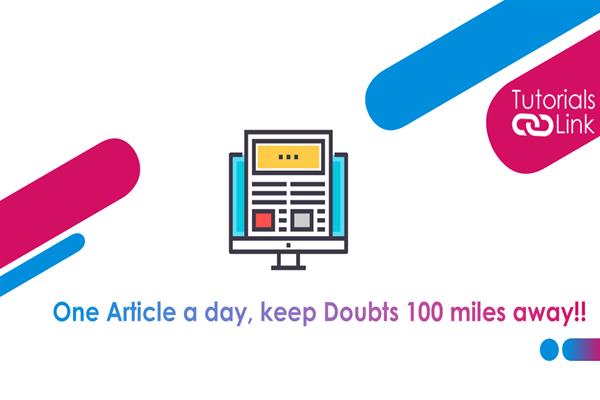AI-Driven Deduplication: Boosting Accuracy and Conflict Resolution in Compliance
In today’s digital age, businesses deal with enormous volumes of data daily, and managing it accurately has become non-negotiable. Deduplication Software and AML Software have emerged as critical tools in ensuring that duplicate records don't derail compliance efforts or operational efficiency. Within the first 100 words, it’s clear: organizations must embrace AI-driven solutions to stay ahead. Integrating advanced technologies like Data Cleaning Software, Data Scrubbing Software, and Sanctions Screening Software into their compliance workflows isn’t optional anymore — it's a necessity for survival and success.
The Data Deluge: Why Traditional Methods Fail
Traditional data management tools were not designed to handle today’s data complexities. With multiple data sources, varied formats, and non-standardized entries, manual or rule-based deduplication is no longer effective. These older systems often miss phonetic variations, typographical errors, and cultural naming conventions, leading to inaccurate matches or worse — missed duplicates.
Modern businesses, particularly those in finance and regulatory sectors, need agile, intelligent systems that can think and adapt like humans but act with machine speed. This is where AI-driven Deduplication Software stands apart.
What Makes AI-Driven Deduplication Revolutionary?
Artificial Intelligence doesn't just scan and match records based on rigid rules. It learns patterns, understands context, and makes judgment calls, much like a human would — only faster and without fatigue. Here's what differentiates AI-driven deduplication:
-
Phonetic and Linguistic Matching: Identifying duplicates even when names, addresses, or identifiers are spelled differently.
-
Adaptive Learning: Improving accuracy over time by learning from past matches and mismatches.
-
Confidence Scoring: Assigning scores to potential matches based on multiple weighted factors, ensuring that businesses only act on high-certainty records.
-
Conflict Resolution: Automatically resolving discrepancies between duplicate records, selecting the most reliable or recent data point.
Automating Conflict Resolution: The Next Big Leap
Data conflicts happen — it’s inevitable. Different sources might contain varying values for the same field. For instance, two entries for a customer might have different addresses or phone numbers. Which one is correct?
An AI-driven Deduplication Software uses intelligent survivorship rules to determine the "winning" data. These could be based on:
-
Recency: Preferring the latest updated record.
-
Source Trustworthiness: Giving more weight to data from trusted sources.
-
Frequency: Choosing the most commonly repeated value across datasets.
Automated conflict resolution dramatically cuts down manual review times, improves the consistency of your master records, and enhances compliance readiness.
The Role of Deduplication in AML Compliance
AML Software (Anti-Money Laundering Software) depends heavily on clean, deduplicated data. If a financial institution has duplicate client profiles, the same person could appear multiple times across different watchlists, or worse, slip through sanctions screening altogether.
Deduplication ensures that each entity in the system is unique and accurate, improving the precision of risk scoring models, transaction monitoring systems, and sanctions checking engines. Cleaner data means faster, more confident decisions — critical when regulatory penalties for non-compliance can be catastrophic.
Why Data Cleaning and Scrubbing Matter More Than Ever
Good deduplication starts with excellent preprocessing. Data Cleaning Software and Data Scrubbing Software are vital in standardizing formats, correcting errors, filling missing fields, and removing invalid entries before deduplication even begins.
For example:
-
Data Cleaning Software ensures that "123 Main St." and "123 Main Street" are treated as equivalent.
-
Data Scrubbing Software removes non-relevant noise like emojis, duplicate whitespace, and outdated fields that could cause false matches.
When used together with AI-driven deduplication, these tools elevate the overall data quality to new heights, which directly impacts compliance and operational outcomes.
Integrating Sanctions Screening into the Mix
Even after deduplication and cleaning, data must be continually monitored against updated watchlists. Sanctions Screening Software plays a vital role here. Clean, deduplicated customer records make sanctions checks faster and far more reliable.
Imagine screening 5 million customer profiles. Without deduplication, you might have 7 million entries, many of which are duplicates. Not only does this waste resources, but it also increases the risk of missing a match because of fragmented data across profiles.
By integrating Sanctions Screening Software into a deduplicated data environment, organizations ensure complete and accurate compliance with global regulations, minimizing legal and reputational risks.
Benefits of AI-Driven Deduplication Across Industries
Although financial services lead the way, industries like healthcare, telecommunications, government, and retail are increasingly adopting AI-driven deduplication. Here's why:
-
Healthcare: Avoid medical errors by ensuring patient records are accurate and unique.
-
Telecommunications: Improve customer service by having a single view of each customer.
-
Retail: Personalize marketing by avoiding redundant communications.
-
Government: Maintain cleaner citizen databases for voting, social services, and more.
The impact is universal — better data leads to better decisions.
Challenges and Considerations When Implementing AI Deduplication
While the advantages are numerous, adopting AI-driven deduplication isn’t plug-and-play. Organizations should consider:
-
Data Privacy: Ensure that AI models don’t violate data privacy laws when accessing or processing sensitive information.
-
Algorithm Transparency: Understand how matching decisions are made, especially for audits.
-
Integration Complexity: Choose solutions that offer API support or hybrid SaaS models to fit into existing tech stacks.
-
Continuous Training: Retrain AI models regularly as business rules and data patterns evolve.
A robust governance framework should accompany any AI-driven deduplication project.
Future Trends: What's Next for Deduplication Software?
The future is bright — and highly automated. Some exciting trends on the horizon include:
-
Self-healing Databases: Systems that detect and fix duplicate records without human intervention.
-
Cross-Industry Deduplication: Matching records across different industries to improve fraud detection.
-
Explainable AI (XAI): Providing clear reasons for every match decision to improve auditability.
-
Federated Learning: Training deduplication models across multiple organizations without sharing sensitive data, enhancing both accuracy and privacy.
Investing in next-generation deduplication today sets the stage for smarter, more agile organizations tomorrow.
Conclusion
As businesses become more data-driven, the risks of poor data quality become more pronounced. AI-driven Deduplication Software and AML Software are no longer optional tools; they are essential components of a successful, compliant organization. When paired with the capabilities of Data Cleaning Software, Data Scrubbing Software, and Sanctions Screening Software, companies can unlock significant efficiencies, reduce regulatory risks, and build lasting trust with customers and regulators alike.
The future of data management is intelligent, automated, and AI-powered — and the time to embrace it is now.





